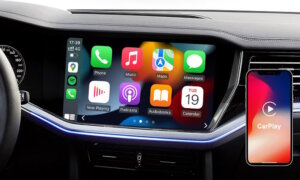Michelin and General Motors want to change the future of car tires with the two companies’ innovative Unique Puncture-proof Tire System (Uptis) technology.
“General Motors is excited about the possibilities that Uptis presents, and we are thrilled to collaborate with Michelin on this breakthrough technology,” Steve Kiefer, Senior Vice President, Global Purchasing and Supply Chain for General Motors said in a statement “Uptis is an ideal fit for propelling the automotive industry into the future and a great example of how our customers benefit when we collaborate and innovate with our supplier partners.”
According to Michelin, the tires are made out of a mix of composite rubber and resin which are embedded in fiberglass. This particular combination allows the vehicles to operate at much faster speeds than any other airless tires. Most of the airless prototypes we have seen around so far only worked as intended when the cars were driving at cruising speed.
Aside from going as fast as any other tires out there, the Uptis come with financial, safety and environmental benefits.
For one, blowouts, flat tires and irregular wear will be history, which is great news not only for us humans but also for the self-driving cars of the future – this will allow them to drive around continuously, but safely.
The wear and tear that normally occurs thanks to over or under-inflation will also be reduced and will contribute to the tires lasting much longer.
Going airless also means we can finally get rid of having all the chemicals involved in tire production go out into the world and harm our planet. But it’s not only during the manufacturing process that they are toxic: tires are normally burned into tire kilns after they’ve ended their life cycle and the black fumes they create contain heavy metals and a number of other harmful pollutants that linger into our air long after the burning ended.
Of course, there’s also the added benefit of not having to drive around with a spare tire in the trunk.
While the tires as not as aesthetically-pleasing as your typical rubber ones, neither Michelin or General Motors seem bothered by it and plan to place them on passenger vehicles by 2024.
Follow TechTheLead on Google News to get the news first.























